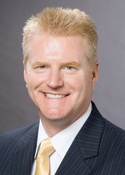Isn't It Time We Just Combine Biotech and Pharma Under One Category?

By Rob Wright, Chief Editor, Life Science Leader
Follow Me On Twitter @RfwrightLSL
 Though some people continue to view biotech and pharma separately, recent M&A activity indicates we are quickly moving toward a singularity (i.e., the biopharmaceutical industry). While there are those who are quick to point out that 71 of the 102 U.S. IPOs for 2014 were biotechs, smashing the record of 47 biotech IPOs in 2013, the reality is these start-ups are necessary fuel for the record M&A activity currently taking place. For example, there were $379.5 billion in deals throughout the pharma, biotech, and medical sectors in 2014 — a twofold increase over 2013. In fact, since 2014 there have been 21 biopharma deals executed that have been > $3 billion. The biggest of the bunch ($66.4 billion) took place between Actavis, a traditional pharmaceutical company, and Allergan, the biotech responsible for bringing BOTOX to the world. Considering all the biotech and pharma M&A activity, isn’t it about time we just combine the two and start referring to it as one — the biopharmaceutical industry? After all, that is the end result of all this M&A.
Though some people continue to view biotech and pharma separately, recent M&A activity indicates we are quickly moving toward a singularity (i.e., the biopharmaceutical industry). While there are those who are quick to point out that 71 of the 102 U.S. IPOs for 2014 were biotechs, smashing the record of 47 biotech IPOs in 2013, the reality is these start-ups are necessary fuel for the record M&A activity currently taking place. For example, there were $379.5 billion in deals throughout the pharma, biotech, and medical sectors in 2014 — a twofold increase over 2013. In fact, since 2014 there have been 21 biopharma deals executed that have been > $3 billion. The biggest of the bunch ($66.4 billion) took place between Actavis, a traditional pharmaceutical company, and Allergan, the biotech responsible for bringing BOTOX to the world. Considering all the biotech and pharma M&A activity, isn’t it about time we just combine the two and start referring to it as one — the biopharmaceutical industry? After all, that is the end result of all this M&A.
AstraZeneca — A Case Study In How To Build A Big Pharma Biologic Pipeline
While every company listed among the top 10 list of the traditional Big Pharmas now has biologic drugs, one of the companies, AstraZeneca (founded by an M&A back in 1999), today boasts nearly half of its pipeline being biologic based. How did it get there? One M&A at a time.
Sparked by the onset of the patent cliff, AstraZeneca (AZ) began its biologic M&A binge in late 2005, picking up KuDOS Pharmaceuticals, a UK biotech, for $210 million. From 2006 to 2007 the company acquired Arrow Therapeutics ($150 million), Cambridge Antibody Technology ($1.07 billion), and vaccine maker MedImmune ($15.2 billion). While AZ did acquire a couple of pharmaceutical companies after 2007 (i.e., Novexel (2010) and Guangdong BeiKang Pharmaceuticals (2011)), in 2012 it collaborated with Bristol-Myers Squibb (BMS) to jointly acquire another biotech, Amylin Pharmaceuticals. AZ’s share of the Amylin deal equated to $3.4 billion. However, one year later it bought out BMS’ share of the jointly held asset for $4.3 billion, while also picking up Amplimmune ($500 million), Omthera Pharmaceuticals ($443 million), Pearl Therapeutics ($1.15 billion), and Spirogen ($440 million).
In 2014, AZ was a acquisition target of Pfizer’s. Though the $118 billion deal failed and was believed to be motivated by the tax inversion craze not pipeline acquisition, keep in mind that if it had happened, from a portfolio pipeline perspective, Pfizer would have added drugs that generated $25 billion in sales for 2013, as well as a complimentary pipeline of early-stage candidates in oncology and allergy/asthma. Once that deal was killed, AZ went back to building its biologic R&D capabilities, acquiring Almiral Sofotec for $2.1 billion and Definiens, a privately-held company that pioneered biomarker tissue identification technology, for $150 million. In total, AZ spent around $30 billion in less than 10 years, with the bulk being earmarked for biologics. Keep in mind, this figure represents a fraction of its wheeling and dealing, as AZ also inked a number of collaborations (e.g., Celgene, Daiichi Sankyo, Eli Lilly, Innate Pharma, Juno Therapeutics, Mitsubishi Tanabe, and Orca Pharmaceuticals).
Where Do Biologic Revenues Reside?
The point of detailing AZ’s acquisition binge isn’t to showcase the company as having made all the right moves, but rAther to illustrate what it represents, and deep down, what all former Big Pharmas are aspiring to become – Big Biopharmas. Consider this, of the top 10 bestselling drugs for 2014, 80 percent were biologics (see table 1). Further evidence of the need to drop the old labels in favor of biopharma is the fact that the majority of these bestselling biologics are contributing profits to companies typically associated as pharma. Oil companies of yesteryear are classified as energy companies today. Shouldn’t we consider doing the same when it comes to properly classifying drug development companies of tomorrow?
Table 1
Top 10 Bestselling Drugs Of 2014
|
Drug |
Sponsor |
Sales ($ Billions) |
Biotherapeutic |
|
Humira |
AbbVie |
$12.54 |
x |
|
Sovaldi |
Gilead |
$10.25 |
x |
|
Remicade |
J&J/Merck |
$9.24 |
x |
|
Rituxan |
Roche/Biogen |
$8.68 |
x |
|
Enbrel |
Amgen/Pfizer |
$8.54 |
x |
|
Lantus |
Sanofi |
$7.28 |
x |
|
Avastin |
Roche |
$6.96 |
x |
|
Herceptin |
Roche |
$6.79 |
x |
|
Advair |
GlaxoSmithKline |
$6.43 |
|
|
Crestor |
AstraZeneca/Shionogi |
$5.87 |
|
